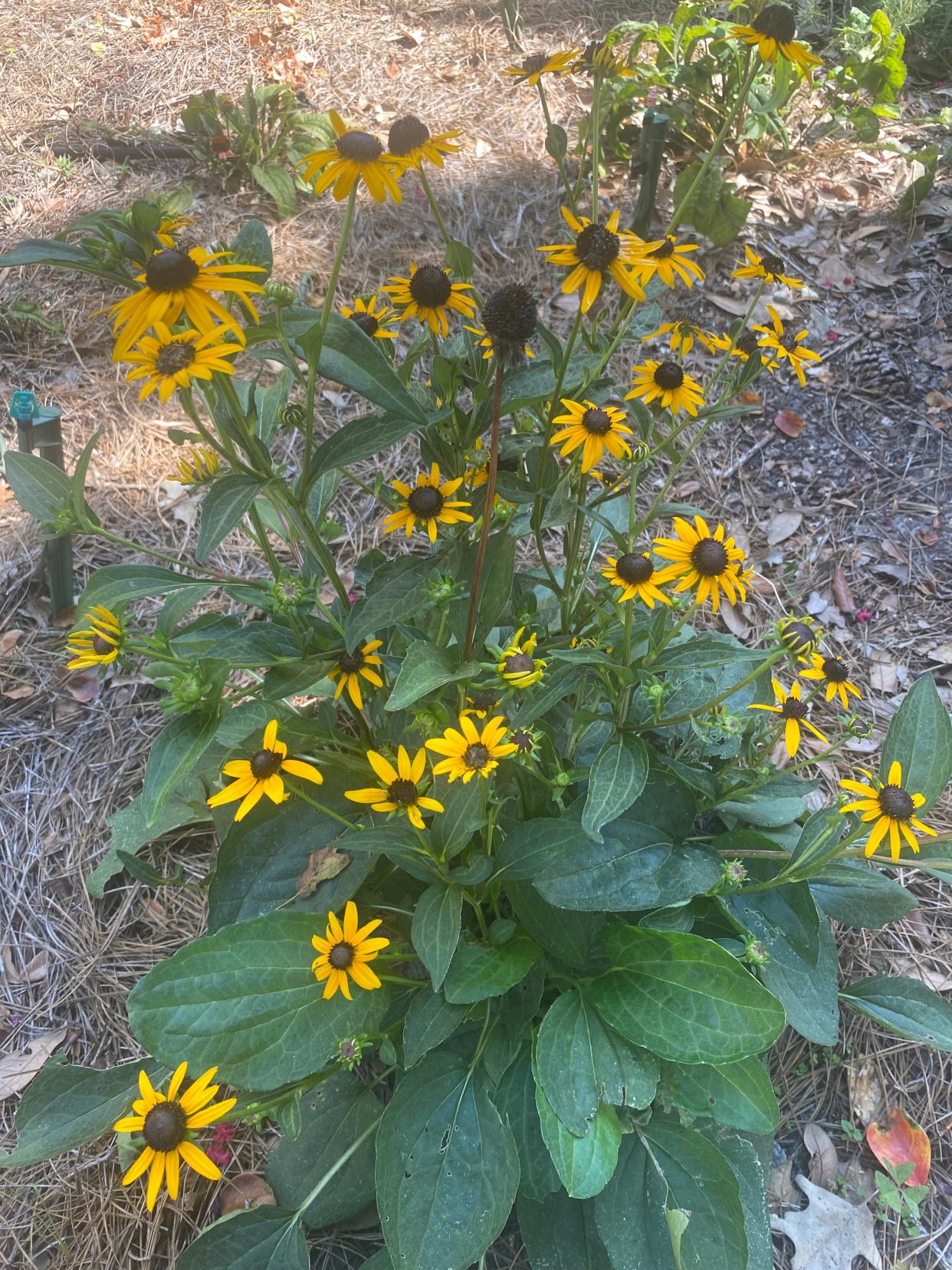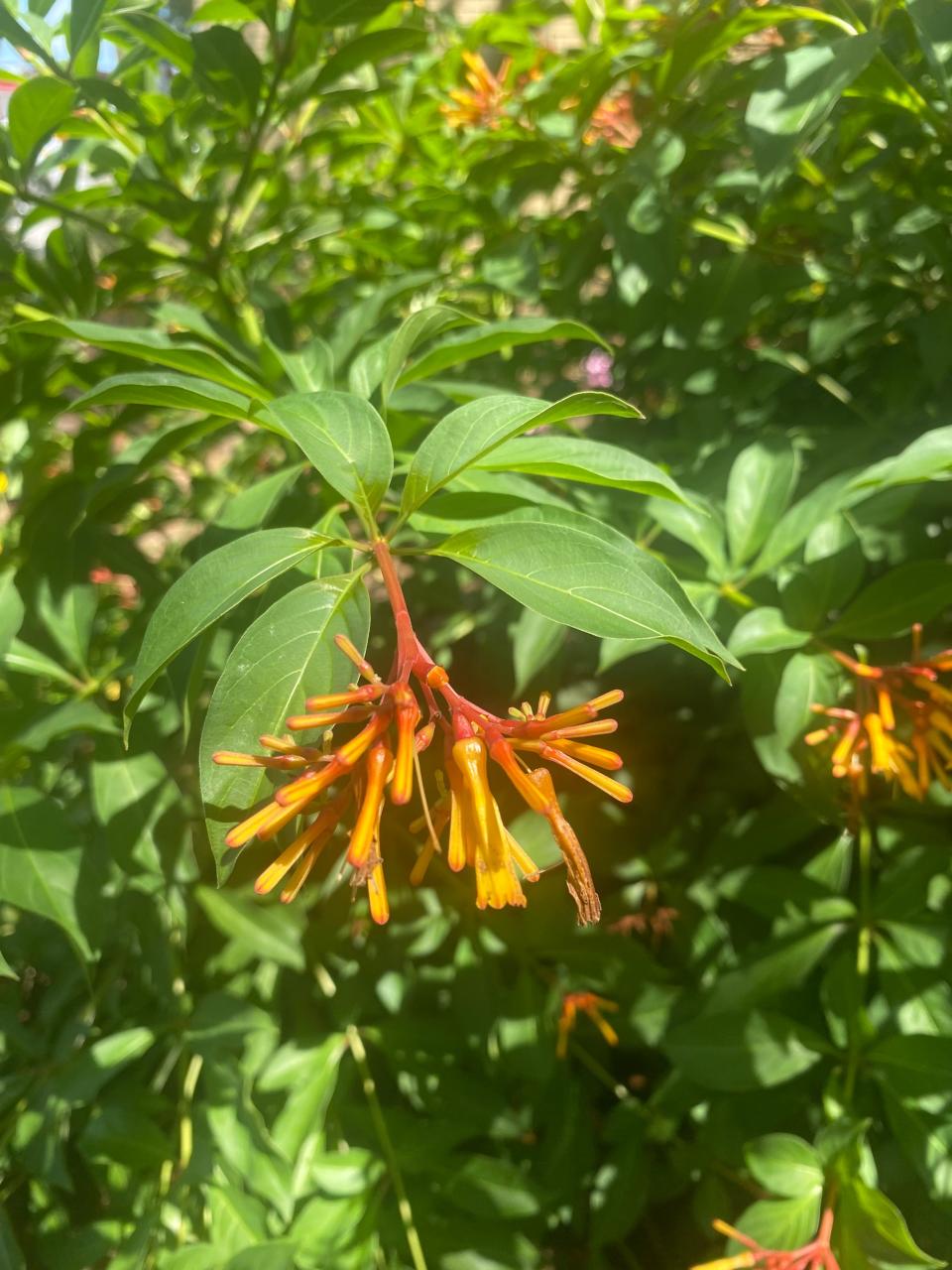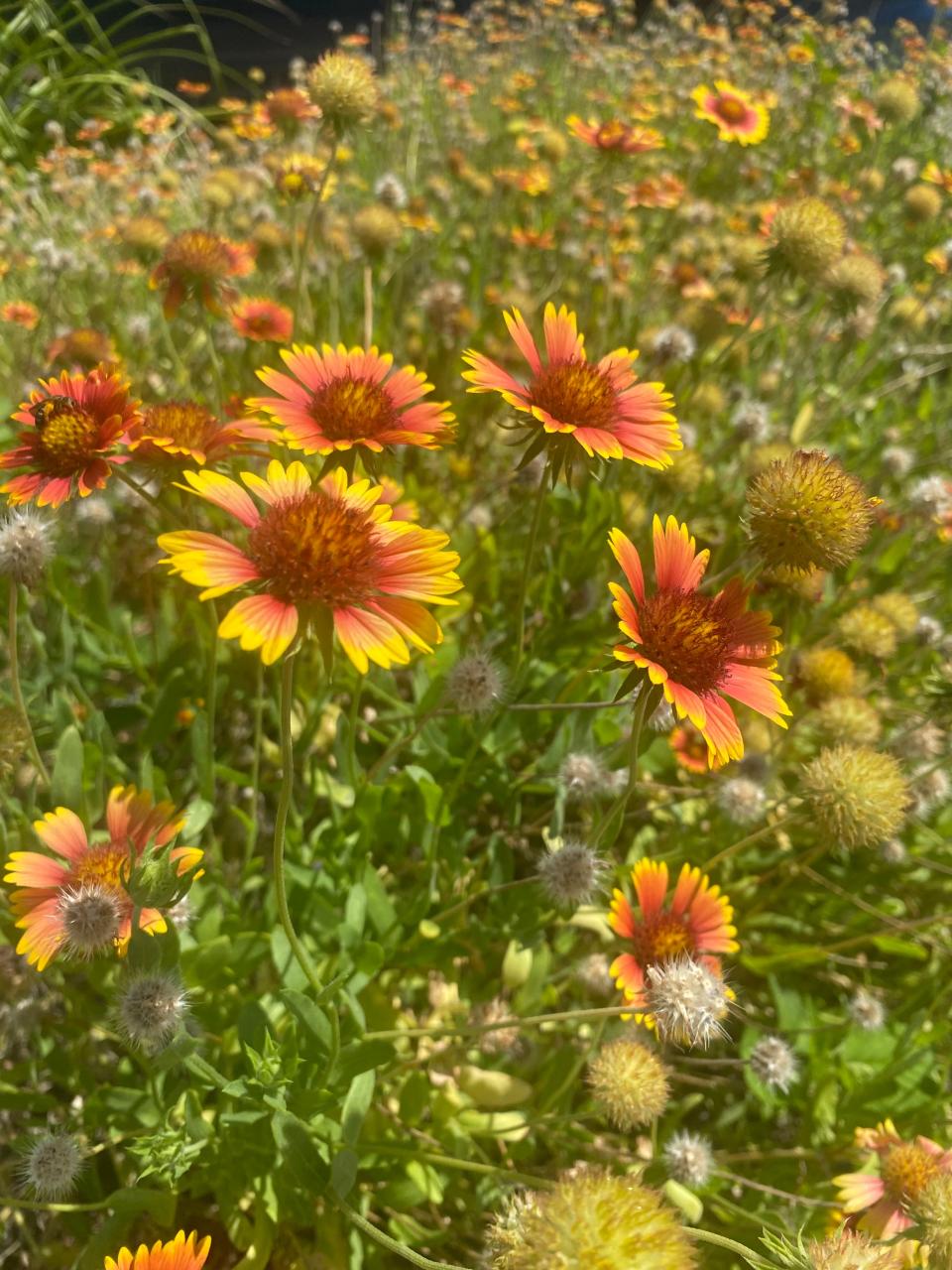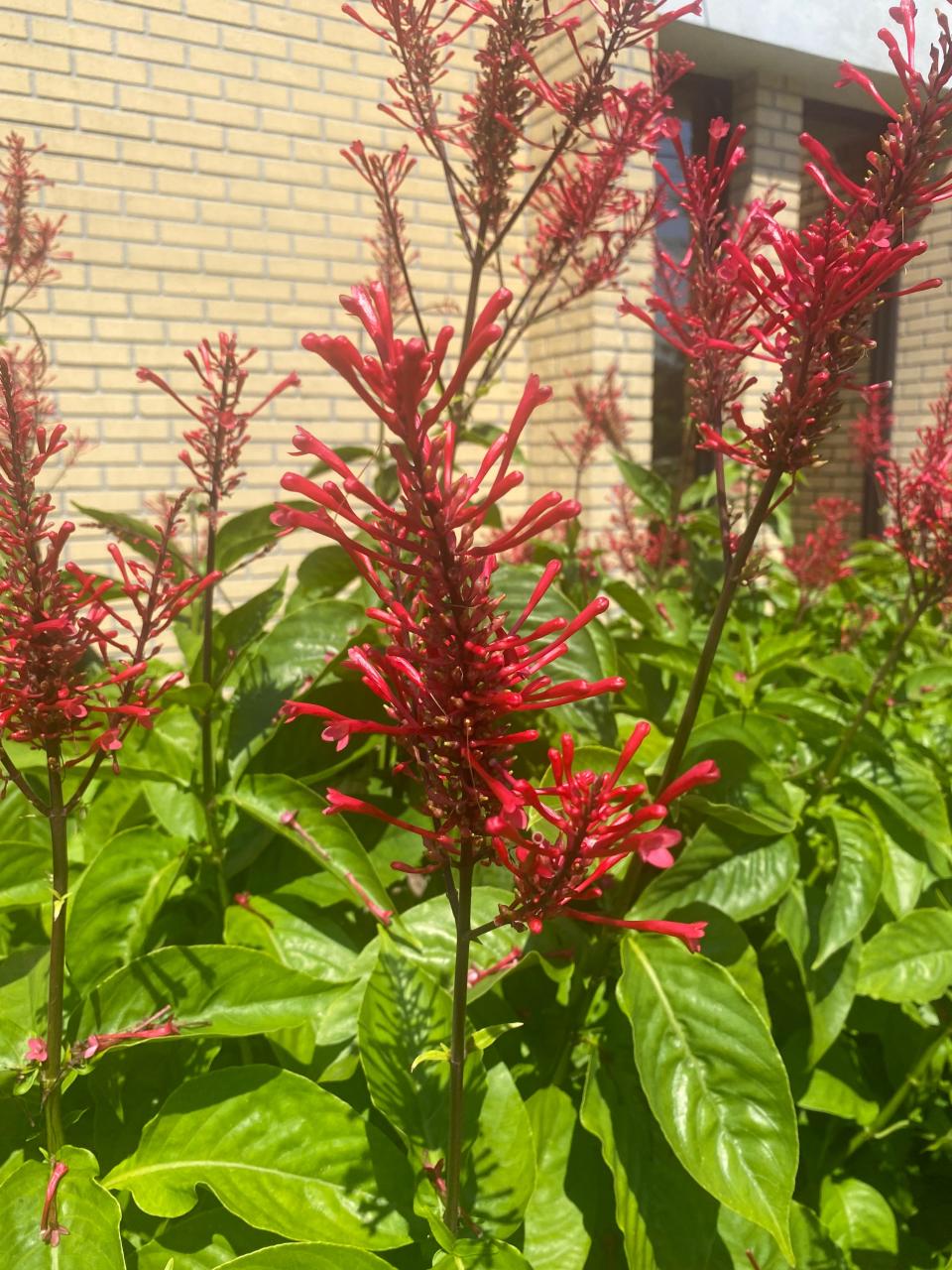Looking for plants that can handle the heat? Here are some suggestions

The heat is on! This summer has been hot and humid and requires tough plants that can tolerate these conditions. Sale plants may not be the best choice, so before finalizing the purchase, make sure the plants will survive the heat. Then choose between annuals for an immediate impact or perennials for the long haul.
Annuals (plants that typically live less than a year) are available at most garden centers. With the right varieties and maintenance, they will provide color from planting until the first frost.
Annuals

Plants to consider include angelonia, balsam (Impatiens balsamina), black-eyed Susan (Rudbeckia spp.), blue daze (Evolvulus glomeratus), celosia, coleus, dahlberg daisy (Thymophylla tenuiloba), euphorbia Diamond Frost, globe amaranth (Gomphrena globosa), impatiens, cup flower (Nierembergia hippomancia), melampodium, New Guinea impatiens, ornamental peppers, mealycup sage (Salvia farinacea), native milkweed (Asclepias spp.), pentas, periwinkle/vinca (Catharanthus roseus), moss rose (Portulaca spp), spider flower (Cleome hassierana), torenia/wishbone flower Summer Wave series, wax begonia, zinnia.
Blue daze is one that I plant every summer because it is salt tolerant and does great in my eastern exposure. Once established, it requires little care other than extra water during dry weather. Plants are covered with small blue flowers that close during the afternoon heat; no deadheading required.
Another no-care plant is Diamond Frost, a dainty plant reaching 12 to 18 inches tall and covered with small white flowers. There were two tucked away in our office landscape that made it through the winter. As long as the soil is not too wet, they will bloom all year.
Vinca/periwinkle is a great plant for hot, dry weather. Their needs are minimal: low water and fertilizers. For years, Vincas had fallen out of favor because they were placed in landscapes that received regular irrigation and fertilizers and as a result developed stem rot disease. Now, there are improved varieties like Nirvana and Cora Series that are more disease resistant. Both come in a variety of colors that perform great in our area. Place in well-drained areas that do not get overhead irrigation for best results.
Torenias with their solid or bi-color tubular flowers are referred to as summer snapdragons. They make a great border plant maxing out at 12 to 15 inches tall. Grow in partial shade to shady areas and don't forget to water when dry.
Perennials

In addition to annuals, there are lots of perennials (plants that live for more than two years) that provide color from spring through fall.
Some of the top performers include beach sunflower (Helianthus debilis), butterfly bush (Buddleia spp.), bulbine Hallmark, bush daisy (Euryops chrysanthemoides), blanket flower (Gaillardia pulchella), cuphea spp. like Mexican heather, firebush (Hamelia patens), firespike (Odontonema strictum), hibiscus, hydrangea, plumbago, Globe amaranth, salvia, shrimp plant, jacobinia (Justicia spp), verbena, and ironweed (Vernonia gigantea).
Although there are lots of salvias on the market, my favorite is Mystic Spires but unfortunately, it's hard to find in local nurseries. Salvia Mystic Spires Blue is a great medium-size perennial for the landscape reaching 2 to 3 feet in height with a matching spread. Purple-blue flower spikes are present year-round.

Another favorite that I grew last year is buddleia x Blue Chip also called Lo & Behold. Blue Chip is a compact butterfly bush ideal as a landscape plant or in containers. Blue Chip matures at 2 to 3 feet tall and produces fragrant miniature blue flowers from spring to early fall and attracts butterflies and hummers. Mine made it through the winter with no problems and is now in full bloom.
My hydrangeas (remontant type) are absolutely covered in blooms and will continue to bloom up until the first frost. Old varieties bloom on old wood vs. these bloom on both old and new wood. To get more bang for your bucks, grow varieties like Endless Summer, Penny Mac, David Ramsey, Oak Hill and Decator Blue.
Foliage plants
Don't forget plants with colorful foliage to add pizazz to landscapes.
Examples include Bourbon Street acalypha, elephant ears (Alocasia spp. or Xanthosoma spp), ornamental sweet potato (Ipomoea batatas), Persian shield (Strobilanthes dyerianus), ti plant (Cordyline terminalis and C. australis Red Star), Burgundy Wine euphorbia, caladiums and coleus.
Growing tips

Before purchasing, match the plants to the specific growing conditions: sun, shade, moist or dry. Globe amaranth, rudbeckia and vinca thrive in full sun, while torenia, hydrangea and cleome like morning sun and shade in the heat of the day. Impatiens, coleus, hydrangeas and blue daze will require supplemental irrigation when it's dry whereas bulbine, Diamond Frost, pentas and vinca are less needy. The take-home message is to take the time to do your research. Don’t be tempted to purchase the plant that is flowering in the garden center without making sure it will survive the heat.
Terry Brite DelValle is an Emeritus Agent with UF/IFAS-Duval County Extension.
This article originally appeared on Florida Times-Union: Plants that will tolerate, thrive in Florida's hot weather

